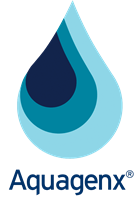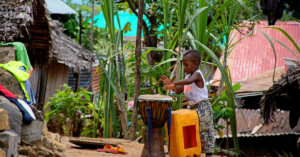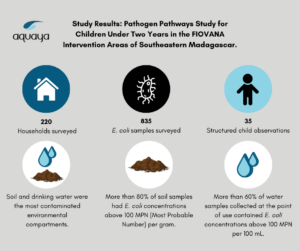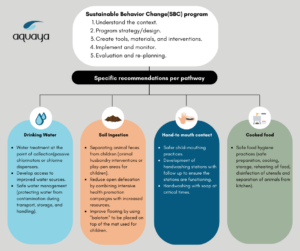Aquaya Utilizes CBT EC+TC Kit in Madagascar to
Analyze Ingestion Pathways of Fecal Pathogens for Children
Aquaya is a data-driven nonprofit organization that is dedicated to improving safe water and sanitation access in low-resource settings. They combine rigorous data collection, advanced analytics, and deep practical experience to inform water and sanitation decisions and sanitation systems. https://aquaya.org/
Project and Problem
In Madagascar, almost 50% of children under age five are stunted, with inadequate water, sanitation and hygiene (WASH) being a critical factor that negatively impacts child growth and overall health. Various pathways such as hand-to-mouth contact, drinking water, food, soil, flies, and fomites (objects that children put in their mouths) can lead to increased fecal pathogen exposure and health risks among young children.
To address the challenges of WASH services, Aquaya and their partners Ny Tanintsika and the Adventist Development and Relief Agency (ADRA) explored targeted interventions to improve the health of infants and young children. Their research focused on two key questions: 1) What are the possible ingestion pathways of fecal pathogens for children under the age of two? 2) What are potential interventions for interrupting these transmission pathways?
The challenge was Aquaya worked in remote, rural areas in Southeast Madagascar with limited access to laboratory equipment, which poses a challenge in conducting water quality tests. Given the constraints, they required a quick and simple water quality testing method to analyze over 50 samples per day in areas with limited resources.
Solution
Aquaya selected the Aquagenx CBT EC+TC MPN Kit to quantify the Most Probable Number (MPN) of E. coli in 100 mL water samples. They chose the Aquagenx product because it is designed for field testing in low resource, rural areas and is easy to use for on-site testing. Aquaya believes another major advantage of the CBT method is it can be used with solid materials like soil or food and can also perform well when testing turbid water. This was a particularly important consideration because water sources included highly turbid rivers, while hand rinse water sometimes captured a lot of dirt from the hands of the subjects.
Their team utilized the CBT EC+TC MPN Kit for analyzing drinking water, hand-rinse (children and caregiver), food, and soil samples that were collected from 220 households situated in the Southeast region of Madagascar. One team conducted the sample collection in the field, while another team worked in the lab to process the collected samples daily.
Test Results and Project Outcomes
After analyzing 835 E. coli samples, Aquaya found that soil and drinking water were the most contaminated environmental pathways, with more than 60% of the samples exceeding 100 MPN/100 mL Their analysis also revealed the hand rinse samples also exhibited significant levels of contamination, with 25% of the samples showing E. coli levels above 100 MPN/100 mL
For a detailed description of the project, methods, results, recommendations and conclusions, read the final report published by Aquaya, USAID and PRO-WASH:
Pathogen Pathways Study for Children Under Two Years in the USAID FIOVANA Intervention Areas of Southeastern Madagascar (November 2022)
Conclusion
Chloé Poulin, Senior Research and Program Manager at Aquaya says, “The CBT EC+TC Kit is a user-friendly method, making it easy to quickly train staff with no prior experience in E. coli analysis. It is a rapid testing method that allows for the efficient processing of numerous samples per day, which was a convenient option for our team.
“Additionally, the color-match scoring system to obtain the Most Probable Number (MPN) of E. coli with the CBT EC+TC Kit is straightforward,” says Poulin, “facilitating the interpretation of test results. We would use Aquagenx test kits again because they are easy to use, which is very useful in low resource settings.”




